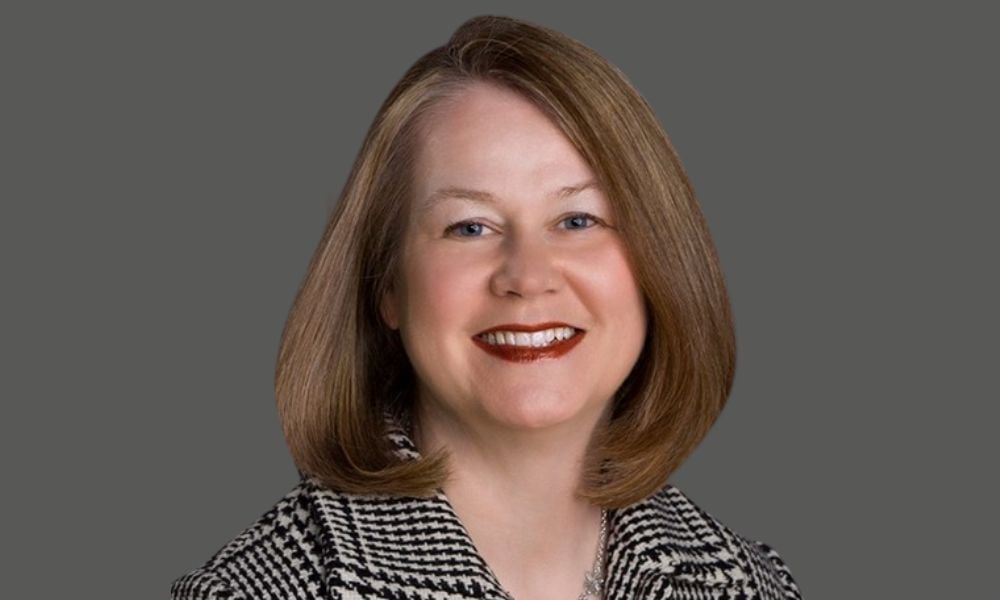It’s natural for first-time corporate directors to be flattered when a major company comes courting their services. They should rather be wary, bordering on suspicious, experienced litigators advise.
The worst of all scenarios unfolds when the formerly fortress-like corporation hits the financial skids and directors face a barrage of civil and possibly criminal actions from multiple jurisdictions where the company is cross-listed on securities exchanges. If that sounds far-fetched, think of such defunct corporate titans as Nortel Networks and Hollinger International, whose board members are still before the courts, says David Conklin of Goodmans LLP in Toronto.
The first bad news, as the ongoing Sino-Forest case has recently reconfirmed, is that those beefy corporate indemnities, which look so comforting when directors sign on, often become worthless when the company is insolvent and under protection of the Companies' Creditors Arrangement Act (CCAA). Sino-Forest serves as a reminder that when shareholders sue auditors, underwriters or directors, they’re essentially seeking access to corporate indemnities — but indemnities are company assets on which secured creditors hold first call. Shareholder suits are viewed as equity claims and thus an attempt to end-run the legally prescribed priority of secured creditors. In such cases, CCAA courts routinely deny auditors, underwriters and directors access to indemnities for the purposes of settlements with shareholders.
This can leave directors of insolvent companies to fall back on D&O (directors' and officers') insurance policies purchased by the company to protect its board members against liabilities incurred in the course of their duties.
“It’s important that officers or directors have an appreciation of the amount of insurance that’s available, the retention limit under the policy, the relationship to indemnities and other key terms under the policy, including exclusions,” Conklin says.
The second major bit of bad news is that A+B+C=X, according to Gary Luftspring with Ricketts, Harris LLP in Toronto. Typical D&O insurance policies, Luftspring says, contain a Side A, covering directors for costs of defending legal actions and paying any judgments or settlements; a Side B, reimbursing the company for Side A expenses (basically the deductible or “retention amount” on the policy); and possibly, a Side C, insuring the company itself against costs of defence and any judgments or settlements. The insurance policy is usually written to total up all those costs and pay them as they’re incurred — until a policy maximum, call it X, is reached. X is a very finite number and after that directors are on their own, he says. D&O insurance is a capped and declining pool of funds. As a result, outside directors, who are often sued after the company and its officers, may well find their insurance, like their indemnity, provides very little real protection.
“I always recommend that [outside directors] look at buying their own policy, as a backup,” Luftspring says. In cases where the company is cross-listed in the US, “I think you would be foolish not to have that kind of coverage.”
For best protection, he says company-purchased D&O coverage should give precedence to Side A claims; should be non-rescindable, in the event officers authorize questionable financial statements; and should not contain exclusions for tax liabilities, since directors are strictly liable for employee income tax withholdings. In cases where the company won’t extend insurance to cover these items, directors should seek to cover them off with personal insurance, Luftspring says.
Defence costs alone can rapidly chew through large amounts of money, especially where the company and each of its officers and directors is represented by separate counsel in more than one action, Conklin says. Where the company is cross-listed in Canada and the US, as was the case for Hollinger and Nortel, directors can be caught in a “perfect storm” of civil and criminal actions in two countries and forced to cover multiple large legal bills from their personal savings, in hopes of fending off even larger judgments for which insurance coverage is already long exhausted.
When big Canadian companies become insolvent, or hopefully before it gets that bad, they typically file for protection of the CCAA, Depression-era legislation that aims to restructure and refloat the insolvent company, forestalling the financial and social chaos of a major bankruptcy. CCAA protection freezes all creditor actions against the debtor company, by court order, in the hope of giving the ailing enterprise time to sell assets, pay debts and renegotiate remaining obligations to a manageable level, so that it can emerge as a going concern under a court-approved plan of arrangement. If that effort is successful, employees and secured creditors are better served than if the company had been consigned to bankruptcy and sold for scrap.
A CCAA filing divides the debts of the protected company into various compartments, including pre- and post-filing claims, with some court-approved post-filing debts taking precedence even over secured-creditor claims. The court may direct a creditor bank to provide debtor-in-possession (DIP) financing to keep the company afloat during restructuring, and may instruct critical suppliers to continue deliveries, albeit granting liens against the assets of the company to ensure payment for those supplies. Both of these obligations become “super-priority” charges on assets of the company, paid before secured creditor claims if the company fails. Other CCAA costs include the fees of the monitor, who’s a certified trustee in bankruptcy (accountant) and who advises the court on all aspects of restructuring, as well as the fees of the lawyer who advises the monitor.
Post-filing indemnities will also be covered by a priority charge on assets of the ailing company. The court will often provide directors and officers of the company with post-filing indemnities for any legal actions stemming from decisions made and liabilities incurred during the restructuring process, with the objective of encouraging informed and experienced leadership to remain in place.
Regardless of such protections, “directors should resign,” Luftspring says flatly. In his view, any sense of directorial duty is vastly outweighed by the precarious financial position of the company, combined with legislation making directors and officers personally liable for any unfunded employee wage claims, income tax withholdings and source deductions for Canada Pension and unemployment insurance. He adds that Canadian law provides very little room for a director to defend against such liabilities. If the company can’t pay, directors are on the hook.
Sometimes, Conklin points out, the D&O insurance provider becomes another foe for the directors and officers to battle in court. In the ongoing Nortel debacle, D&O insurer Chartis Insurance Company contested its obligation to fund the legal defence of certain officers, on the basis that they should first exhaust a $10-million retention amount and a company-funded $12-million executive trust. The motion judge ruled that Nortel was precluded from providing funds from either source by the CCAA stay of proceedings, and that Chartis was required by its policy to pay defence costs. That decision was upheld by the Ontario Court of Appeal on Aug. 15. But officers received coverage only after two additional court proceedings — and the threat of further legal costs had the decision gone against them.
Another risk to officers and directors is increasingly tough environmental legislation and enforcement in most provinces, Conklin says. In the recent insolvency and final bankruptcy of Milton, Ontario-based Northstar Aerospace Canada, the allocation of all assets to pay creditor claims left board members holding the bag for environmental monitoring costs on polluted Northstar land estimated at $1.4 million per year, plus some $15 million in remediation costs.
As in most cases, Northstar’s D&O coverage excluded environmental liabilities, Conklin says. Worse, while Northstar was under CCAA protection, that court ruled D&O indemnities for environmental costs could not be given priority over claims of secured creditors. In the absence of company assets to meet its claim, the Ontario Ministry of the Environment (MOE) filed a D&O remediation order last year. Officers and directors appealed the remediation order to the Ontario Environmental Review Tribunal (ERT) and also asked the ERT for a stay of monitoring activities – and costs – during their appeal. While ERT stayed the $15-million remediation claim during the appeal, it said on November 12, 2012, that it did not have authority to stay environmental monitoring and associated costs of $1.4 million per year. That decision was upheld June 19, 2013, by the Ontario Divisional Court, leaving directors liable to pay the running tab for monitoring, at least until the ERT renders a decision on the entire remediation order.
Directors and officers are also exposed if they fail to protect company interests properly, as required under the CBCA, Conklin says. Board members can attract lawsuits launched by the company itself, or by its shareholders, and the fraught nature of insolvencies may make such actions more likely. In such cases, insurers will routinely reject claims for coverage of board members’ defence costs, since actions by the company or its shareholders necessarily imply wrongful acts by the board.
While settlements of shareholder suits from corporate indemnities is disallowed, there’s a presumption in Canada that indemnities should at least pay advances on board members’ defence costs, since these can be clawed back where director malfeasance is found at trial. But Conklin cautions that advances aren’t guaranteed. Even where sufficient cash remains, the CBCA provides that advance funding of legal costs can be denied if there’s a strong prima facie case that board members acted in bad faith.
In Look Communications, the board sought CCAA protection for the ailing company and sold off primary assets to other telecom companies for $64 million in 2009. But then the board authorized payments of nearly $20 million – or some 30 per cent of assets – to themselves through the exercise of equity appreciation rights, based on a share valuation at twice the going market price.
“That valuation was never disclosed” and total payouts to directors weren’t revealed to shareholders until six months after the fact, Conklin says. Shareholders then launched a proxy fight for control of the company and, facing expectations of lawsuits, board members authorized Look to pay $1.5 million to three law firms acting for them. As the last act of the same board meeting, they resigned. When Look sued its former board members, the departed officers and directors applied to the CCAA court for advance funding of defence costs, based on company bylaws and their indemnity agreements. But, on the basis of evidence put forward by the company, the court found a strong prima facie case that former directors acted in bad faith, and that decision was upheld by the Ontario Court of Appeal on July 4, 2013. Both courts rejected arguments that directors relied on expert legal advice in voting their share appreciation payments, with the Court of Appeal noting that the board’s lawyer never commented on the validity of the valuations.
Since the WorldCom and Enron fiascos of 2002, the scandal over widespread backdating of board members’ options in the US, prosecutions of Hollinger, Nortel and Livent executives in Canada and other proven and alleged directorial misdeeds, Conklin says, “there is, no doubt, a greater awareness of the responsibilities officers and directors have and the need to ensure that [their] authority is not exercised in self-interest. But, for all that, there are not many examples of civil or criminal cases that have gone to trial. The fact is, the Canadian regulators tend to focus on insider trading, civil cases [tend to] settle and there are very few criminal prosecutions.”
Brandon Barnes of Davis LLP in Toronto says CCAA is less than perfect, but it’s the best solution that experience has fashioned for insolvency situations.
“You need a lot of money to go bankrupt — or to avoid it through CCAA,” Barnes says. “The process involves an influx of lawyers, accountants and other professionals who negotiate and bicker their way through the company’s balance sheet, all while charging by the hour.” All of which means that payment priorities may be reordered, legal actions are very likely, insurance and indemnities are doubtful and prospective directors and officers of even the most established corporate institutions should very carefully consider insolvency risks before signing on.
Helpfully, Conklin notes that most D&O insurance terms are one year, giving existing board members regular opportunities to re-examine their coverage.
Brian Burton is a writer on energy and legal matters based in Calgary.




